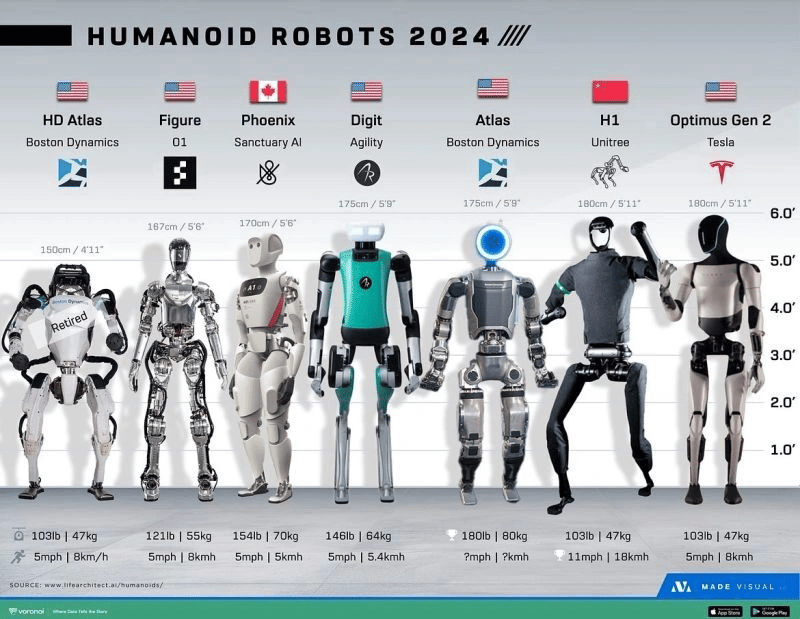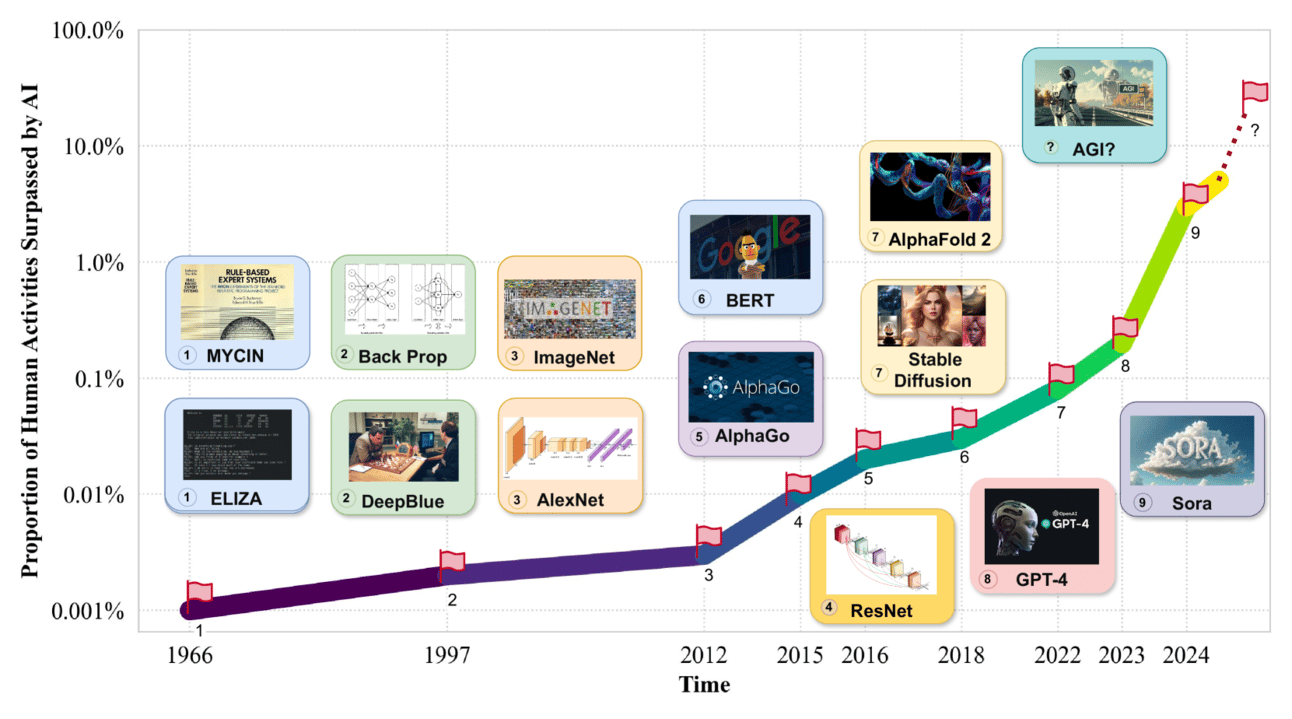- TransAI
- Posts
- The Diverging Paths of AGI and Robotics: The Future of Work in an AI-Dominated World
The Diverging Paths of AGI and Robotics: The Future of Work in an AI-Dominated World
The Matrix is everywhere.
Introduction
Artificial General Intelligence (AGI) and robotics are often discussed together in the context of automation and the future of work. However, the rate of advancement in these two domains is following very different trajectories. AGI development, fueled by breakthroughs in deep learning, open-source initiatives like DeepSeek, and large-scale computational capabilities, is progressing at an unprecedented pace. In contrast, physical robotics, such as humanoid robots from companies like Boston Dynamics and Tesla, faces numerous engineering challenges that slow its evolution. This disparity raises an important question: will intelligent, white-collar jobs be replaced by AGI before blue-collar jobs can be automated by robotics? And if so, does this imply that a large segment of the white-collar workforce will need to be reskilled into blue-collar roles?
The Growth Curves of AGI and Robotics
The advancements in AGI and robotics can be visualized as two distinct curves. The AGI curve is steep, following an exponential growth trajectory driven by ever-increasing compute power, large-scale datasets, and algorithmic improvements. In contrast, the robotics curve is flatter, facing significant barriers in hardware reliability, power efficiency, dexterity, and real-world adaptability.
Why AGI is Advancing Faster Than Robotics
Software vs. Hardware Bottlenecks: AGI development is primarily a software challenge that scales rapidly with computational improvements, while robotics must overcome complex mechanical and physical constraints.
Training Data and Simulation: AGI models can be trained on vast amounts of data using cloud computing, whereas robots require real-world interactions that are slow, costly, and subject to safety concerns.
Generalization vs. Specialization: AGI models are improving their ability to generalize across domains, while robots are still struggling with the adaptability required for unpredictable real-world environments.
The Impending Shift: White-Collar Job Displacement Before Blue-Collar Automation
With AGI advancing at a rapid pace, jobs that involve cognitive tasks—such as legal analysis, finance, programming, and customer support—are increasingly vulnerable. Large language models (LLMs) are already demonstrating capabilities that surpass human expertise in knowledge-intensive fields. As AGI systems evolve, their ability to reason, strategize, and make autonomous decisions will further encroach on traditional white-collar roles.
Why Blue-Collar Jobs May Persist Longer
Manual Dexterity Challenges: Many blue-collar jobs require precise motor skills that robots have yet to master efficiently.
Cost and Maintenance: Developing and maintaining humanoid robots at scale is far more expensive than deploying software-based AGI solutions.
Human Creativity and Adaptability: Many trades involve problem-solving in unpredictable environments, making automation harder to implement.
The Future of Work: A Reskilling Dilemma?
As AGI increasingly automates cognitive labor, the displaced workforce will face two primary paths:
Reskilling into Blue-Collar Jobs: Some white-collar professionals may need to transition into trades that remain resistant to automation, such as construction, plumbing, and electrical work.
New Roles in AI-Augmented Work: A hybrid workforce may emerge where humans oversee, fine-tune, and collaborate with AI systems, requiring new skill sets that blend AI literacy with practical expertise.
A New Socioeconomic Reality
The trajectory of AGI versus robotics suggests a world where cognitive jobs are automated first, potentially disrupting professional industries before blue-collar roles. This shift necessitates proactive measures in education, workforce training, and policy-making to ensure a smooth transition into an AI-driven economy. Organizations and governments must anticipate these changes and prepare the workforce for an era where reskilling is not just an option but a necessity.
The question remains: Will society be ready for the inversion of traditional labor displacement trends, where the office worker must adapt before the factory worker? The time to prepare for that future is now.
The Matrix is everywhere.

